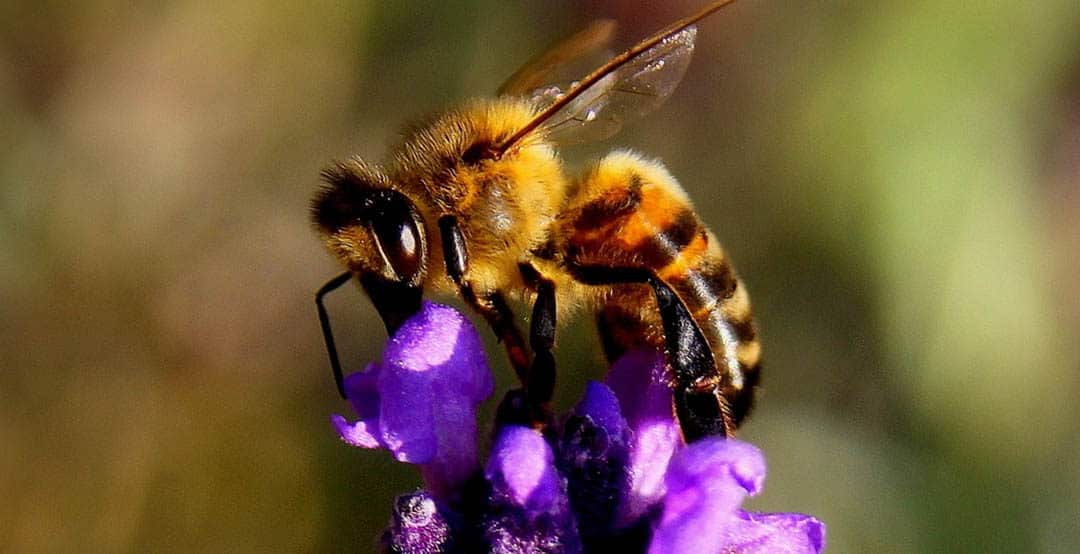Top 10 Bee-Friendly Plants for a Thriving Garden
Discover the top 10 bee-friendly plants to grow in your garden, including lavender, bee balm, and sunflowers. Learn how to create a vibrant habitat for bees and other pollinators while enjoying a beautiful, eco-friendly garden.
Are you looking to create a beautiful and beneficial garden that supports both your enjoyment and the environment? Growing bee-friendly plants is a fantastic way to achieve this! Not only do these plants provide a vital habitat for bees and other pollinators, but they also help maintain the health and diversity of our ecosystem. If you’re aiming for a garden that’s both stunning and sustainable, bee-friendly plants are the way to go.
In this blog post, we’ll delve into the best bee-friendly plants, starting with the versatile and easy-to-grow lavender. We’ll also share our top 10 picks for other bee-friendly plants to add to your garden, so you can create a lush haven that supports pollination and environmental health. Let’s get started!
How to Grow Lavender: A Bee-Friendly Favorite
Lavender is one of the most popular bee-friendly plants due to its vibrant color, calming fragrance, and ease of growth. It’s not only attractive to bees but also incredibly versatile for gardeners. Here’s a step-by-step guide to growing lavender in your garden.
1. Choosing the Right Location
Lavender thrives in full sun, so choose a spot in your garden that receives at least 6-8 hours of direct sunlight daily. Ensure the soil is well-draining, as lavender roots are susceptible to rot in overly moist conditions. If your soil tends to retain water, consider adding sand or gravel to improve drainage.
2. Preparing the Soil
Lavender prefers slightly alkaline soil. To achieve this, consider adding lime or wood ash to your garden soil. Test your soil pH and aim for a level between 6.5 and 7.5 for optimal growth.
3. Planting and Spacing
Space your lavender plants at least 12 inches apart to promote adequate air circulation and prevent mold or mildew. Dig a hole just deep enough to cover the root ball and gently backfill the soil around the plant.
4. Watering and Maintenance
Lavender is drought-tolerant and prefers to be watered sparingly. Water only when the top inch of soil feels dry to the touch. Avoid overwatering, as this can cause root rot. Prune your lavender plants once a year in early spring to encourage new growth and prevent them from becoming too woody.
By following these simple steps, you can enjoy the beauty and benefits of lavender while creating a bee-friendly haven in your garden.

Top 10 Bee-Friendly Plants to Add to Your Garden
In addition to lavender, there are numerous other plants that attract bees and contribute to a vibrant, pollinator-friendly environment. Here are our top 10 picks:
1. Bee Balm (Monarda)
Bee Balm produces vibrant red or pink flowers that are irresistible to bees and butterflies. This perennial plant thrives in full sun and well-drained soil, making it a great addition to any bee-friendly garden.
2. Coneflower (Echinacea)
Coneflowers are hardy perennials that produce beautiful purple, pink, or white blooms throughout the summer. They provide both nectar and pollen for bees, making them a favorite among pollinators.
3. Black-Eyed Susan (Rudbeckia)
These bright yellow flowers attract a variety of pollinators, including bees, butterflies, and hummingbirds. Black-Eyed Susans are easy to grow and can handle a range of soil types.
4. Sunflower (Helianthus)
Sunflowers are tall, cheerful flowers that provide both nectar and pollen. They’re a great choice for attracting bees and other beneficial insects, and they also make a striking statement in any garden.
5. Salvia (Salvia spp.)
Salvia plants, known for their spiky flowers in shades of blue, purple, or pink, are a favorite of bees and hummingbirds. They thrive in full sun and well-draining soil.
6. Wild Indigo (Baptisia)
Wild Indigo is a native plant that produces vibrant blue flowers. It is particularly attractive to bees and other pollinators and grows well in a range of soil conditions.
7. Goldenrod (Solidago)
Goldenrod blooms in late summer and fall, providing a critical food source for bees preparing for winter. Its bright yellow flowers are a magnet for bees and butterflies alike.
8. Aster (Symphyotrichum)
Asters produce daisy-like flowers in various shades, including pink, purple, and blue. They are late bloomers, providing a much-needed source of nectar for bees in the fall.
9. Catmint (Nepeta)
Catmint produces clusters of purple or blue flowers that are highly attractive to bees. It’s a hardy, drought-tolerant plant that is easy to care for, making it perfect for any garden.
10. Globe Thistle (Echinops)
Globe Thistle features striking blue or purple globe-shaped flowers that attract bees and butterflies. This plant adds unique texture and color to any bee-friendly garden.
By incorporating these bee-friendly plants alongside lavender, you’ll create a diverse and thriving ecosystem that benefits both you and the environment.
Why Growing Bee-Friendly Plants Matters
Bees play a crucial role in pollination, which is essential for plant reproduction and maintaining biodiversity. By growing bee-friendly plants, you’re supporting a healthy environment and ensuring that bees continue to thrive. Plus, with plants like lavender, you get the added benefit of beautiful, fragrant blooms in your garden.
Create Your Bee-Friendly Garden Today!
Ready to start your bee-friendly garden? Whether you’re looking for expert advice or just some inspiration, we’re here to help! Contact our team for personalized recommendations on selecting the best bee-friendly plants for your garden. Let’s work together to create a thriving, eco-friendly space that benefits both you and the bees!


